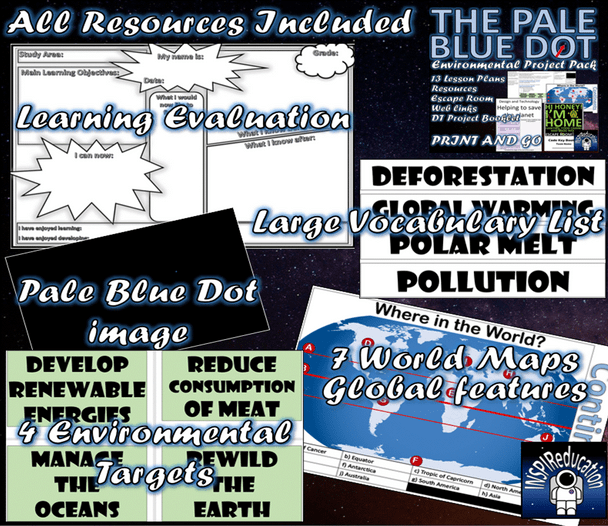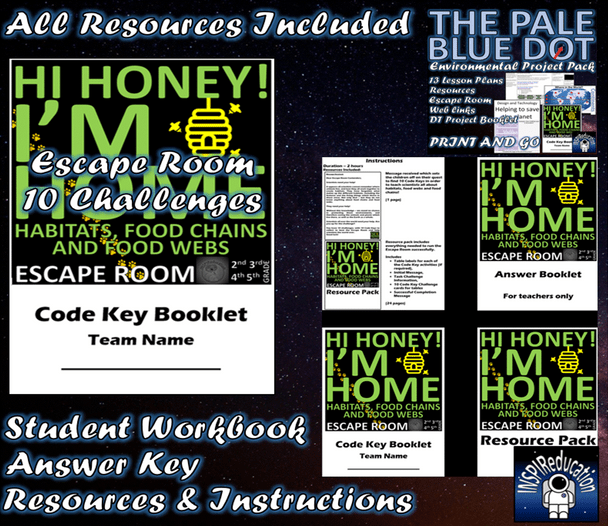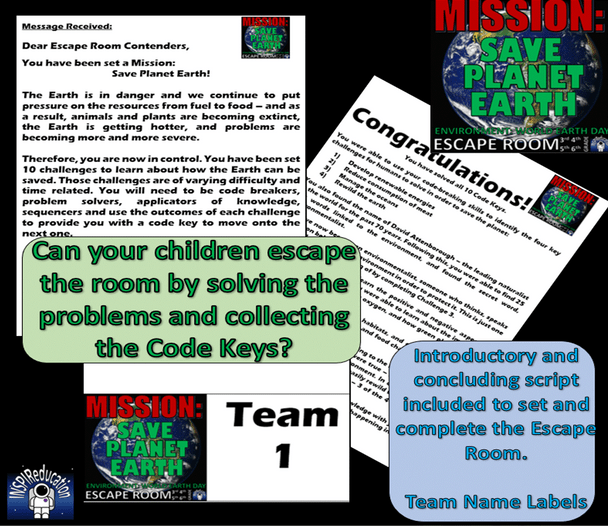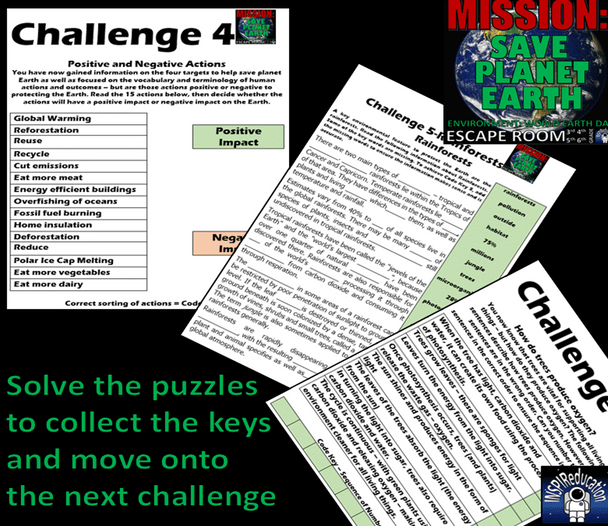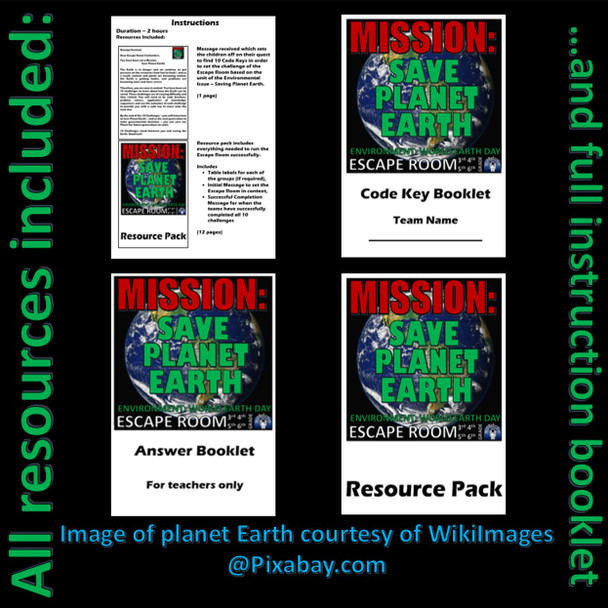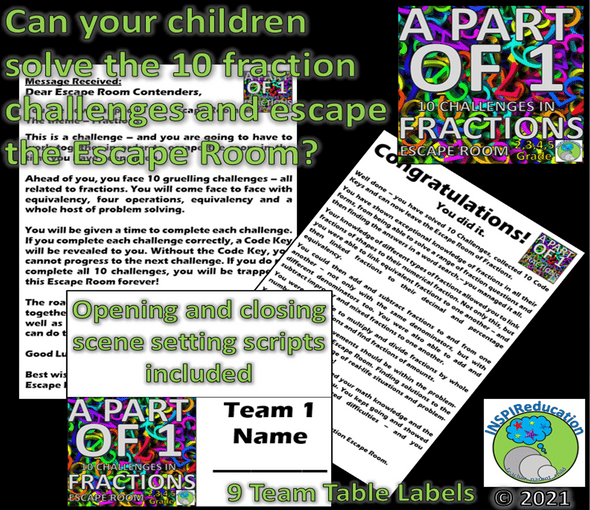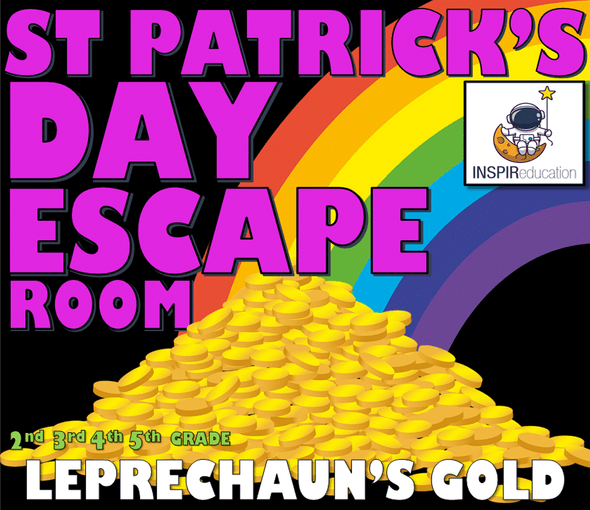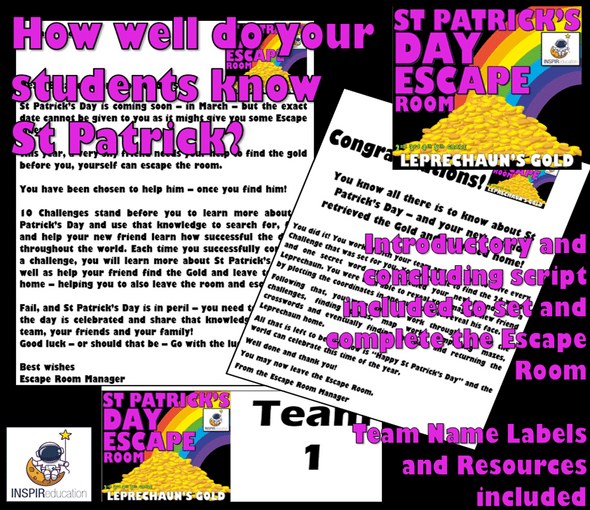Description
We have put together our two popular environmental projects into one bundle to support teachers in providing their students with an extensive, exciting and challenging environmental project pack. This can be used at any time in the year as part of an environmental focus, World Earth Day or within Science study units.
Included are two products:
- Environmental project pack
- Mission: Save Planet Earth (Escape Room).
Details of each can be seen below:
Product One
Environmental Project Pack
Ideal for a whole week project, or full day of environmental activities to develop students knowledge and understanding of their role in Protecting the Earth and working through Global Earth Day! This resource is a complete project pack for learning about "The Pale Blue Dot" and how we can save the planet with the actions we decide to take now. The project begins by introducing students to the notion of Carl Sagan's image and text regarding the view of Earth as seen from the sun - a Pale Blue Dot. From then the students are introduced to the four main targets which could save planet Earth for many generations to come.
This is developed through the use of the following elements which are all included in the resource:
- 13 detailed lesson plans which all reference the resources included and when to use them alongside links to two videos to use to support the teaching
- Resource 1: Evaluation of learning and development of knowledge
- Resource 2: Key vocabulary word list for display
- Resource 3: Pale Blue Dot image to display
- Resource 4: 4 Targets to display
- Resource 5: 7 maps illustrating key geographical features (continents, oceans, deserts, rainforests, volcanoes, world rivers, world mountain ranges) all of which support life in different habitats (answer key also included)
- Resource 6: Escape Room: "Hi Honey! I'm home" - 10 Challenges focusing on habitats, food chains and food webs, developing the notion that many animals are interdependent on one another and require their specific habitats to thrive. Answer Key, Resources and Instructions are all included within this resource)
- Resource 7: Research four key environmental issues: deforestation, Global warming, Polar Ice Cap Melting, Plastic Pollution. Identify reasons for these issues and the impact, as well as possible solutions to these global problems.
- Resource 8: Using growing knowledge of global issues, habitats and needs of the globe to protect Earth for future generations, students use the four agreed targets for global protection to identify local issues which have been developed to support the environment. Part b of this activity is to identify possible future targets within the locality which students can solve the problem of by innovating a solution
- Resource 9: DT Planning booklet to develop and innovate a solution to one of the local issues identified by the students. The 6 pages include step by step support to research information, sketch ideas, review materials, produce step by step guide to build the innovation, building the innovation in template form, create the product, test and evaluate the final product.
The end of the project (lesson 13) is the students presenting the whole course to an audience through displaying the outcomes of each of the lessons - each of which produces a developing focus on how the students can play a part in protecting the global environment through taking on a local issue.
Lesson objectives (brief) are:
- Lesson 1: Elicitation - what the students know about the Earth before learning begins - self evaluation (using resource 1) and key vocabulary (resource 2)
- Lesson 2: Introducing the Pale Blue Dot and the four targets to save the Earth (developing renewable energies, reduce consumption of meat, manage the oceans, rewild the Earth)
- Lesson 3: Identifying and mapping the key geographical features of Earth (resource 5)
- Lesson 4: Where do animals live? Mapping habitats (ESCAPE ROOM) Resource 6
- Lesson 5: How are the actions of humans impacting on Earth (resource 7)
- Lesson 6: Top 10 of the most destructive, everyday items produced on Earth
- Lesson 7: How do living things grow and reproduce?
- Lesson 8: What is our responsibility?
- Lesson 9: Changes needed in our locality (Resource 8)
- Lesson 10: DT Focus - innovating change within our locality to support the environment (resource 9)
- Lesson 11: How has our awareness of the environment been developed over time?
- Lesson 12: How are we helping to save the planet?
- Lesson 13: Evaluation of learning
We think this resource is particularly powerful in making a global issue relatable to younger learners (4th, 5th and 6th graders) and make them feel that they are able to make a difference to their own environment and effect change in their community - particularly by sharing their outcomes at the end of the project.
Product Two
Mission: Save Planet Earth (Escape Room)
Using an Escape Room to develop curriculum knowledge is an exciting activity that will inspire learners from 3rd to 6th Grade. This Escape Room is a great resource for exploring human impact on the Environment. Not only that, it makes a fantastic, fun, engaging – yet thought-provoking activity to share with students for World Earth Day each year.
The curriculum content of this Escape Room is linked to Geography and the Environment, in particular:
- To know the four targets to help protect the Earth (renewable energies, reduce consumption in meat, rewild the Earth, restock the oceans)
- To know the language and meaning of the key vocabulary associated with environmental issues
- Understand how green plants and forests support life on Earth
- Habitats, food chains and food webs
- How human diet is impacting on global change
The aim of the Escape Room is to provide jeopardy for the children to work under pressure to solve 10 clues to help raise their knowledge of The Environment and the impact humans are having on the Earth. The 10 Challenges within this Escape Room will support knowledge and understanding of how our actions are changing the Earth, but what we can do to reverse those changes and help protect the Earth for many generations to come.
Included within this Escape Room:
- Pupil Answer Book (Code Key Booklet)
- Answer Booklet for teachers
- Starting script to set the scene of the Escape Room and explain what the students must do
- Concluding script, celebrating the learning which has taken place and allows the students to “leave” the Escape Room
- Table labels for students to name their own teams
- Full instructions to be able to simply print and go within your own classroom
Before beginning, you will need to prepare the following:
- A copy of the Pupil Workbook for each group
- A set of table team names for every group – prepared beforehand and given to each group to set up their own working space
- IT sources and research materials if required
- Initial Starting Script sharing the problem to the children
- Completion Script celebrating the completion of the challenge
Children do not need prior knowledge of the Environment to complete this Escape Room so is suitable for a starter challenge to a new topic. The ability to have access to research resources will support the answers. This Escape Room is ideal as a review of learning to identify what the children have learnt and retained as a result of completing the study unit of the Environment, and human impact on the Earth.
The activity begins by the teacher reader the Initial Message received. It clearly tells the children that they are required to help raise their understanding of the four key challenges humans face in order to preserve the Earth for many generations to come. The accurate completion of each of the challenges enables the students to move from one challenge to another. They must complete each challenge correctly before moving onto the next challenge, continuing the Escape Room collecting all ten code keys!
After the 10th activity – the teacher can read the final script which reviews the learning the children have undertaken as they have completed each of the challenges. This script, together with team labels and the opening challenge script are contained within the Resource Pack.
Each activity focuses and builds the children’s knowledge of The Environment and human impact on the Earth.
The 10 activities are based on the following outcomes:
- Code breaking activity – using letters and numbers to find the four Challenges facing humans which can support the preservation of the Earth for many generations to come
- Word Search to introduce 25 key words related to the Environment ensuring that children develop a wide vocabulary. There is also an extra hidden word which the children must find in order to solve the Code Key and move to the next challenge. This will introduce students to the term “Environmentalist” and see this as a mantle which they take on throughout the Escape Room and beyond.
- Crossword to complete which introduces further important information to the children – there are 13 clues to solve.
- Positive and negative actions of humans impacting on planet Earth (Matching activity)
- Rainforests and the role green plants have upon sustaining all living things on Earth (Cloze Procedure)
- How do plants produce oxygen? (Sequencing activity)
- Habitats and living things within those habitats (Matching)
- Food chains: Sequencing and matching animals to positions in food chains, as well as the vocabulary associated to their positions within the food chain
- Food chains in different habitats – grassland, forest, ocean, artic.
- True or False: Awareness of how human dietary habits are impacting on the Earth, and how, by changing specific elements, the Earth can be protected.
When all 10 activities are completed, and the children have gained the correct Code Keys from each activity, the final celebratory script can be read which reviews the learning and informs the children that they have been successful and can leave the Escape Room!
Thank you for visiting our store and looking at our products
Best wishes
INSPIReducation




